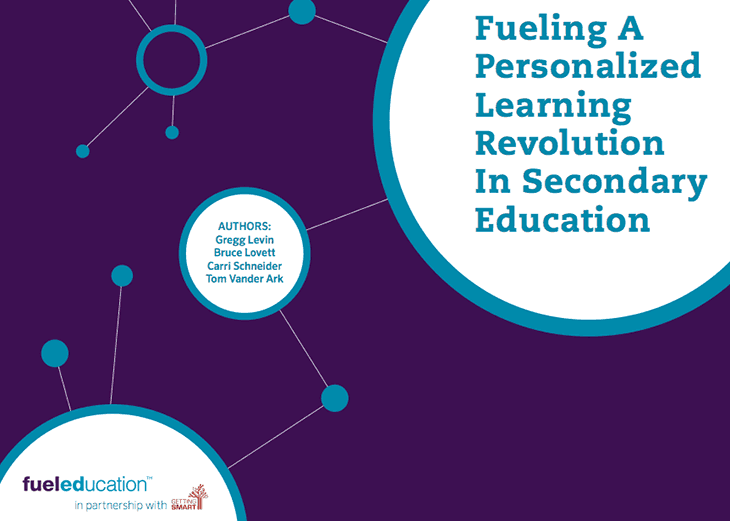If Online Courses Support Personalized Learning, Then Why Aren’t We Using Them?

We say that we want students to own their education, to be invested in what and why they are learning, but are we realistically putting them in a position to want to learn? Are we offering the courses they both need and want to take?
If you don’t think students have a good idea of what they want, then you don’t know Logan LaPlante (@loganlaplante). At 13 years old, this articulate and confident young man is able to break down exactly what he wants his education to look like. Logan believes in the study and practice of being happy and he (with his parents’ support) has “hacked” his education to create a learning experience that supports his creativity and increases his happiness level. This may be a case of taking student ownership to the extreme, BUT it is a good reminder that finding and meeting unique student interests is extremely important. If you haven’t already watched his Ted Talk, YOU SHOULD. Here it is:
Given that not every family is prepared to take on the adventure of home schooling or “Hack Schooling,” the next best thing is to supplement current instruction with a variety of online options. Online courses provide an interesting opportunity for schools across the country to offer a larger variety of courses with expert teachers at a price that is now too good to pass up.
University of California A – G Requirements. The UC System holds very specific requirements when it comes to college acceptance. To even be considered for admission, incoming freshman must achieve a C or better in 15 year-long courses on the “A – G” course list. California schools and families have undoubtedly heard about these A – G Requirements, but how wide of a variety of options are schools offering?
Historically it has been difficult for schools to offer all of these courses in a traditional fashion. It requires finding unique talent and scheduling courses that only a few students may be interested in. With online options schools can incorporate quality courses with expert teachers for much less than the price of a small face-to-face class (e.g., $750 vs. $1500 per student). Every district in California can now afford to offer all every A-G course.
Many California schools offer one or two world languages and one or two Advanced Placement courses. With the right partner, every district can offer every AP class and the top six world languages. Online learning also expands access to speciality and CTE electives like Sports and Entertainment Marketing.
In a recent conversation with our friends at Fuel Education, we were excited to learn more about what they are working on in the arena of online options. They currently have 95 A – G approved courses available for schools and districts, and their PEAK platform is a super flexible option for what these courses can look like (support for current teachers or fully online expert teachers). It makes it almost too easy and too cost effective to have any good excuse not to increase offerings.
Course Access. In an effort to expand access to part time online learning, the state of Louisiana created Louisiana Supplemental Course Academy where high school students in the state were provided allocated funds related to the cost of high school credit courses in an effort to increase the options for high school coursework. These courses include career and tech prep, advanced coursework, dual enrollment, remediation work, and even online therapy options offered by providers like PresenceLearning. The engagement around this idea, however still seems low.
Online learning can expand upper division (junior and senior) offerings and save enough money to reinvest in blended core courses with strong academic supports. School and district leaders should host community conversations and conduct surveys about courses that would be of interest. There may only be three students who want to take a Latin course, but shouldn’t they still be able to take it? The one size fits all approach to education just isn’t relevant anymore.
For more information on schools that are utilizing the power of online options to expand offerings to their students, check out the school profiles in Fueling a Personalized Learning Revolution in Secondary Education.
And, for more on student choice and online options, see:
- Leading in an Era of Change: Making the Most of State Course Access Programs
- Online Education: A Framework for Selecting Quality Course Providers at Competitive Prices (A pricing strategy proposed by Stanford students)
- Expanding Course Access in Louisiana
- Louisiana Students Gain Online Options
PresenceLearning and Fuel Education are Getting Smart Advocacy Partners.





0 Comments
Leave a Comment
Your email address will not be published. All fields are required.